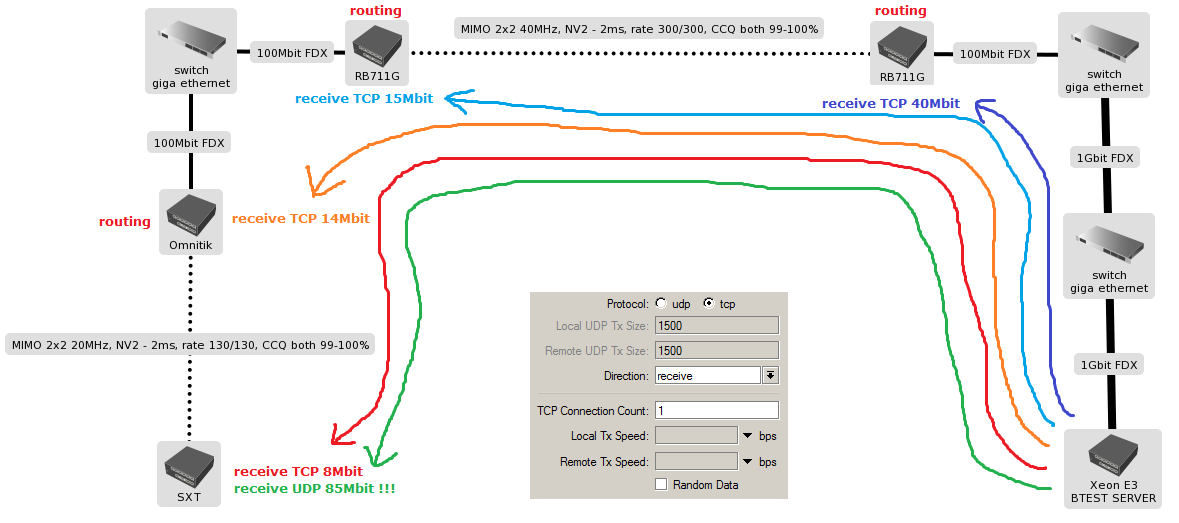

If you need to measure the maximum network speed in both directions (in a duplex mode), use the –d option on the client:ĭuring the network test using iPerf, you can monitor your network connection throughput chart through the Task Manager. If you need to test your Internet service provider bandwidth, you can use one of the public iPerf servers (iPerf public host list is available here): In this case, you should start the iPerf server with the command: iperf3 -s –u). I kept the same setting for the new CHR btest server. User the –R option on the client for this.īy default, the utility generates TCP traffic, if you need to check your network bandwidth for UDP packets, you must use the –u option. Mikrotik Bandwidth test server: 207.32.195.2 bandwidth test username: btest bandwidth test password: btest FYI: Below is the simple queue I was using on the older x86 32-bit ROS best server. You can run iPerf in reverse mode (the server sends data, and the client accepts). In the continuous tests, when you have to estimate the performance during several minutes (hours), you can set the period of time to display the intermediate results using the –i option.

Using the -f argument, you can change the speed format (bits, kilobits or megabits). 307 MB of data was transferred ( Transfer column) with the symmetric speed (sender=receiver). In this case the average network bandwidth between two hosts is 85.9 Mbit/s. In the final report, we are interested in the values of the Bandwidth column listed in the last line. In my example, the test lasted 30 seconds. -P 8 – is the number of parallel threads (streams) to get the maximum channel load.-t 30 – is the time in seconds for the test to be done (by default, it is 10 seconds).I have added LAN firewall rules to allow port 69. -w 32768 – increase the TCP window size Case Studies and Examples - RouterOS - MikroTik Documentation.-c 192.168.1.200 – IP address of the iPerf server.


 0 kommentar(er)
0 kommentar(er)
